#white-winged redstart
Text
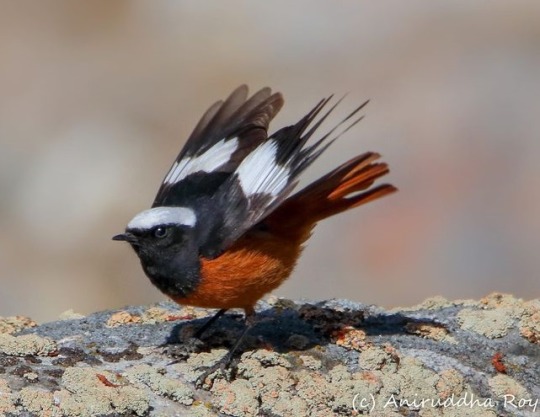
White-winged Redstart (Phoenicurus erythrogastrus), family Muscicapidae, Gurdongmar Plateau, North Sikkim, India
photograph by Aniruddha Roy
202 notes
·
View notes
Text
Birds of Thargelion
After this I just have Maglor’s Gap and that will complete my series on birds in the Fëanorian realms pre Amon Ereb!
Flora, fauna, geography and environment of Arda Masterlist
Thargelion was the realm of Caranthir, located in the north east of Beleriand just north of Ossiriand and bordered by the Ered Luin, the eastern stretch of mountains that divided Beleriand from the rest of Middle Earth
As always this is not a definitive list! Please feel free to ask more or give me a more specific category!
Around Lake Helevorn and the rivers: Red-breasted merganser, mute swan, white tailed dipper, whooper swan, smew, little grebe, red throated loon, common crane, mallard, common white eye, northern shovler, green winged teal, corn crake, spotted crake, black winged stilt
Mountains: bearded vulture, water pipit, golden eagle, kestrel, peregrine falcon, Rock ptarmigan, common siskin, alpine accentor, northern wheatear, ring ouzel, white tailed eagle, chough, spotted nutcracker, Citril finch, griffon vulture, common redstart, common raven, wallcreeper, common jay, boreal owl, white winged snowfinch, crag martin, common redstart, black redstart
Foothills and forests: black grouse, wood grouse, goshawk, grey white fronted goose, hazel grouse, little bunting, meadow pipit, tree sparrow, hedge warbler, Bohemian waxwing, common kestrel, long eared owl, little owl, marsh tit, coal tit, mourning dove, rock pigeon, woodchat strike
World building notes
-Like most of the Noldor in Eastern Beleriand, many of Caranthir’s scouts keep birds of prey. In Thargelion these are primarily peregrine falcons and kestrels. Hunting with birds was less common however.
--There are populations of Green Elves who live in Thargelion, primarily in the mountains and near the border of Ossiriand. Though they also do not use birds for hunting, certain species are kept as companions or messengers.
-Chicken breeding as an art and science developed during the Watchful Peace. Chickens in Thargelion are appraised for long plumage and colorful feathers. Their eggs are eaten but they are not often used for meat.
-Chickens, peacocks and quails were kept by the Noldor of Thargelion, techniques of raising and breeding them were learned from Sindar and Silvan cultures of Eastern Beleriand. Indeed the Noldor of Thargelion were one of the only Noldor populations to keep quails.
-Bearded vultures appear on the crests of some of Caranthir’s lords and were even kept by a few of them
-Feathers of various mountain birds especially eagles and ouzel appear in wood carvings as an architectural motif during the Watchful Peace in Thargelion
-Out of all the Fëanorian realms, water birds appear most often in art and other cultural references in Thargelion as Lake Helevorn and its wildlife are a central facet of life there especially in times of peace. Wading birds like crakes, cranes and stilts are especially Valued.
33 notes
·
View notes
Text
I guess it's time I share my list of birds from this past Jewish year (I've been keeping two Big Year lists, Jewish year and secular year). All are from the US, except the last few which are indicated.
1. Ruby-crowned kinglet
2. American Robin
* Leucistic American Robin
3. Song sparrow
4. Rock pigeon
* Melanistic rock pigeon
5. Chipping sparrow
6. Hairy woodpecker
7. Mourning dove
8. Northern flicker
9. Eastern towhee
10. White crowned sparrow
11. White-throated sparrow
12 Savannah sparrow
13. House sparrow
14. European starling
15. American Crow
16. Common Raven
17. Gray catbird
18. Northern mockingbird
19. Canada Goose
20. Spotted Sandpiper
21. American herring gull
22. Marsh wren
23. Limpkin
24. Great white heron
25. Cattle egret
26. Anhinga
27. Snowy egret
28. Great blue heron
29. Black-crowned night heron
30. Wood stork
31. Common gallinule
32. Blue-gray gnatcatcher
33. Turkey vulture
34. Black vulture
35. Yellow rumped warbler
36. Tufted titmouse
37. Little blue heron
38. White ibis
39. Cooper's hawk
40. Cardinal
41. Green heron
42. Carolina wren
43. Palm warbler
44. Pine warbler
45. Sandhill crane
46. Carolina chickadee
47. Bluejay
48. Osprey
49. Chimney swift
50. Red-tailed hawk
51. Prairie warbler
52. American kestrel
53. Glossy ibis
54. Pied-billed grebe
55. Double-crested cormorant
56. Grey kingbird
57. Brown pelican
58. Fish crow
59. Royal tern
60. Bald eagle
61. Painted bunting
62. American white pelican
63. Common grackle
64. Boat-tailed grackle
65. Great-tailed grackle
66. American purple gallinule
67. American coot
68. Brown-headed cowbird
69. Tricolored heron
70. Mallard
71. Black-bellied whistling duck
72. Eastern kingbird
73. Yellow-billed cuckoo
74. Muscovy duck
75. American bittern
76. Ring-billed gull
77. American Pekin
78. Mallard-Pekin hybrid
79. Eastern bluebird
80. Yellow-bellied sapsucker
81. Red-winged blackbird
82. White-eyed vireo
83. Mottled duck
84. Broad-winged hawk
85. Dark-eyed junco
86. Brown thrasher
87. Sharp-shinned hawk
88. House finch
89. Eastern Phoebe
90. Downy woodpecker
91. Fox sparrow
92. Loggerhead Shrike!!!!
93. White breasted nuthatch
94. Red-bellied woodpecker
95. Brown creeper
96. Pileated woodpecker
97. American goldfinch
98. House wren
99. Barn swallow
100. Tree swallow
101. Black and white warbler
102. Red eyed vireo
103. Yellow warbler
104. Mute swan
105. Rusty blackbird
106. Common yellowthroat
107. Warbling vireo
108. Northern waterthrush
109. Veery
110. Swamp sparrow
111. Wood duck
112. American redstart
113. Orchard oriole
114. Greater Yellowlegs
115. Lesser Yellowlegs
116. Baltimore oriole
117. Hermit thrush
118. Wood thrush
119. Ovenbird
120. Indigo bunting
121. Black-throated blue warbler
122. Scarlet tanager
123. Worm-eating warbler
124. Northern rough-winged swallow
125. Blue-headed vireo
126. Northern parula
127. Prothonotary warbler
128. Philadelphia vireo
129. Blackburnian warbler
130. Magnolia warbler
131. Cedar waxwing
132. Blackpoll warbler
133. Yellow-throated vireo
134. Eastern wood pewee
135. Acadian flycatcher
136. Tennessee warbler
137. Caspian tern
138. Laughing gull
139. Forster's tern
140. American oystercatcher
141. Green-winged teal
142. Purple Martin
143. Least tern
144. Field sparrow
145. Killdeer
146. Grey-cheeked thrush
147. Rose-breasted grosbeak
148. Great-crested flycatcher
149. Swainson's thrush
150. Bay-breasted warbler
151. Chestnut-sided warbler
152. Willow flycatcher
153. Ruby-throated hummingbird
154. Peregrine falcon
155. Hooded crow IL
156. Laughing dove IL
157. Eurasian collared dove IL
158. Eurasian jackdaw IL
159. Common myna IL
160. Rose-ringed parakeet IL
161. White spectacled bulbul IL
162. European bee eater IL
163. Chukar IL
164. Short toed snake eagle IL
165. White stork IL
166. Little egret IL
167. Pygmy cormorant IL
168. Eurasian hoopoe IL
169. Alpine swift IL
170. Graceful pinia IL
171. Eastern Olivaceous Warbler IL
172. Tristan's Starling IL
173. Fan tailed raven IL
174. Eurasian black cap IL
Here's to at least 200 next year!
32 notes
·
View notes
Text
Round 3, Poll 8
Pink Robin vs Painted Redstart
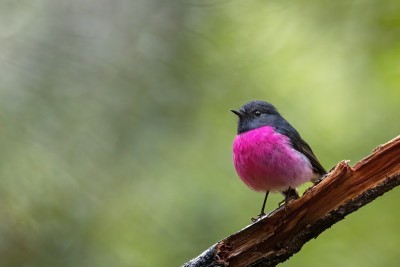

sources under cut
Pink Robin
"round. pink. baby."
Yet another cute, round bird that is not a "true robin". Being an Australian songbird, it is not related to the European robin (an old-world flycatcher) or the American robin (a thrush).
These birds are found year-round on Tasmania, but also can be found on the tip of Southeastern Australia just near the island. They prefer rainforest and wet eucalypt forests.
Painted Redstart
"saw my lifer while chillin in a natural hot spring B)"
"Nests are set on the ground on slopes, seldom in trees, usually in sites that provide some cover from above such as in cavities, under bushes, or on the side of a canyon, a creek bed, or even a building."
Tail flicking and fanning are a common behaviors of this species, with birds flicking their long tails while foraging, or fanning their tails to communicate with each other or a perceived threat. When pairing up for the season, males will start with displays and singing, and a receptive female will sing back to her male throughout the day. This continues even into the nesting period, as a "whisper" song.
Images: Robin (JJ Harrison)
Birds of the World: Pink Robin
30 notes
·
View notes
Text

"Captain Latoya stayed submerged in the luxurious bathtub until her fingertips turned pruney. With eyes clossed in blissed solitude and the pleasant scent of sandalwood on her nostrils, Latoya muttered a solemn vow to herself: that she wouldn't be reduced to rely on the indignity of a communal shower ever again."
LIMINAL STATES: WIP INTRO
audience: adult.
genre(s): space fantasy, adventure, cyberpunk.
style: omniscient narrator.
type: first installment in a series of novels.
Setting
A faraway galaxy already heavily populated by sapient before humans arrived and colonised it, something that already occurred a long time ago. It's a conflictive territory where tensions are high between different planets, species, or organizations trying to claim an extra smidge of power for themselves.
Summary
Captain Latoya is a pirate, an alien-human hybrid, and the descendant of tyrants. A sketchy group has helped her get an early release from prison, and its leader wants her to work for them. But in less than twenty-four hours Latoya meets a mysterious and beautiful woman, gets her aid to steal a ship with a faulty artificial intelligence, and scapes with the crew of mismatched criminals that had been put together for her. Now they're on the run, targeted by more people they're aware of as they encounter unexpected adventures in their path.
Characters
Latoya 😈
30 | Black, brown-skinned, tall, slender. Short wiry black hair, big hawk nose. Red eyes with a black sclera; two sets of sharp fangs; vestigial, black, membranous wings.
Once the heir of a now fallen empire, is now a feared pirate captain across the galaxy (interrupted by a brief stint in prison that affected her more than she'd care to admit, after the betrayal of a former crew). Arrogant, idealistic, ruthless, sharp, brave. She's a killer, a history savant, a natural performer and a hopeless romantic.
Leena ⛏
25 | Black, notoriously dark-skinned, toned, over two meters tall. Long black hair in twist braids, dark brown eyes.
On the run from the people who trained her and practically raised her, Leena is an enhanced human lacking in social graces shrouded in mystery. She has a perfectionist, proud, sentimental, curious and rebellious nature, a weakness for pretty and useless things, and the sticky fingers to grab them. Those get her in trouble when she tries to pickpocket Latoya at the worse possible time.
Alastair 🧠
22 | White, wafer-thin, sickly pale. Blonde, with green eyes. Webbed hands, horizontal pupils.
A talented and dangerous telepath held at bay by her own scruples. She got recruited by the same organization that helped Latoya, after the situation in the royal court she worked in went sideways for her. She's paranoid, resilient, and a social chameleon.
Alegría 🔥
28 | White, short, fat, curvy. Long, fine red hair, dark eyes, rosy complexion. Completely human in appearance.
Pyrokinetic. She was cut away from her family for years after her hidden powers manifested in regrettable ways, taking odd jobs to get by until debt caught up to her. She's bold, almost painfully earnest and sincere, bubbly in appearance but reserved in personal matters.
Zira 🩺
36 | Black, dark-skinned, short, bony. Long curly hair always out of the way, dark eyes, wide mouth often pursed.
A once renowned surgeon fallen from grace and dissatisfied with her current job. She's generally hard-hearted, shameless, sensible, promiscuous, extremely competent under pressure, and just equally fearful of failure.
Redstart 🤖
Age unknown. Disembodied. With a soothing, raspy voice.
The faulty, and at first nameless, artificial intelligence carrying the spaceship. Their personality will develop alongside the story, as they seemingly grow outside the abilities of regular AIs and bond with the crew.
OTHER CHARACTERS OF IMPORTANCE:
Latoya's family 👑: Queen Emeritus Tivona (grandmother, executed during the uprising), Empress Casiphia (mother, fate unknown); Prince Mahlon (father, political prisoner), Princess Sade (older sister, fate unknown).
Ra & the Magpie 💔: vigilante duo in a crussade that crosses paths with the crew.
Leith 🐍: woman leading the organisation that recruits them.
The Priestess 🚩: member of the Galatea chasing Leena.
Latoya's old crew 🏴☠️: the ones that betrayed her. Decima (her quartermaster), Azumi & Joram (con-artist duo), and some others.
taglist (send an ask to be added/removed): @thebluesthourcommunity
WIP masterlist.
#writeblr#writing community#writeblr community#writers on tumblr#wip intro#fantasy wip#space fantasy#wip: liminal states#series: the redstart's ledger#id in alt text#original post#original writing#my original writing
32 notes
·
View notes
Note
Do yu know what other animals were in ancient egypt? I want my oc to have a unique animal and you seem to know a fair amount

I am a well of ridiculous, hyperspecific, only interesting to some trivia lmao.
I would encourage you not to limit yourself to an entirely unique beast- many deities share sacred animals and are still strong individuals. My mind immediately goes to the huge number of feline deities- lions and lionesses in particular- for an example. Additionally, it's nigh impossible for me (with no academic anthropology/egyptology/historic zoology knowledge) to say for certain that particular animals were present in Kemet when they have no documented deities, mummies, or written mentions. I've had to guess for some, deduce by their present day habitats and more or less "timeline" of their species.
It's also important to keep in mind Kemet had contact with other civilizations in other habitats, meaning they were aware of animals not necessarily native to the area. A perfect example is the Hamadryas baboon- they were Nubian animals, but were sacred to both Thoth and Babi, depicted in art, and many mummies of the species have been recovered. A more surprising example is the Syrian brown bear, which was a rare exotic spectacle for the royal elite. There's also the trouble of many species now being extant from the area, meaning they were there but the local population is now extinct- the African sacred ibis is the example my mind comes to first, the waterfowl no longer present along the Nile.
Coincidentally, I've been compiling a list of animals for my own reference to supply a beast or two for the deities that don't have one in tradition.

Birds
Abdim's Stork
African Darter
African Dwarf Kingfisher
African Grass Owl
African Open-billed Stork
African Pied Wagtail
African Sacred Ibis
Asian Green Bee-Eater
Barbary Falcon
Barbary Partridge
Barn Owl
Barn Swallow
Bearded Vulture
Bennu Heron (likely not an actual animal, the Bennu bird inspired by the Goliath Heron- but felt like including it anyhow)
Black Kite
Black Stork
Black-throated Loon
Black-winged Kite
Brown-necked Raven
Carrion Crow
Cattle Egret
Chukar Partridge
Common Buzzard
Common Cormorant
Common Crane
Common Greenshank
Common House Martin
Common Kestrel
Common Kingfisher
Common Pochard
Common Quail
Common Raven
Common Redshank
Common Redstart
Common Sandpiper
Common Spoonbill
Common Teal
Crab Plover
Crested Plover
Dalmatian Pelican
Demoiselle Crane
Eagle (I'm sure there were some, but I can't find any definitive evidence of species in the ancient Kemetic culture- I would take a guess that the Golden Eage was an infrequent visitor)
Egyptian Plover
Egyptian Vulture
European Roller (considered a pest)
European Turtle-dove
Eurasian Coot
Eurasian Crag Martin
Eurasian Teal
Eurasian Wigeon
Fan-tailed Raven
Ferruginous Duck
Gadwall
Garganey
Glossy Ibis
Golden Oriole
Goliath Heron
Great Bittern
Great Bustard
Great Cormorant
Great Egret
Great Spotted Cuckoo
Great White Pelican
Greater Flamingo (possibly not native)
Green Sandpiper
Grey Heron
Griffon Vulture
Helmeted Guineafowl (not native)
Hermit Ibis
Hobby Falcon
Honey Buzzard
Hooded Crow
Hoopoe
Houbara Bustard
House Crow
House Sparrow (pest, hieroglyph had negative connotation)
Kittliz's Plover
Lanner Falcon
Lappet-faced Vulture
Laughing Dove
Lesser Kestrel
Lesser Pied Kingfisher
Little Bittern
Little Bustard
Little Egret
Little Owl
Long-eared Owl
Long-legged Buzzard
Mallard
Marabou Stork
Marsh Sandpiper
Masked Shrike
Merlin
Mourning Wheatear
Northern Lapwing
Northern Pintail
Northern Shoveler
Ostrich
Pale Crag Martin
Peregrine Falcon
Pied Avocet
Pink-backed Pelican
Purple Gallinule
Purple Heron
Red Kite
Red-backed Shrike
Red-footed Falcon
Red-rumped Wheatear
Reed Cormorant
Ring-necked Dove
Rock Dove
Rook
Ruddy Shelduck
Saddle-bill Stork
Saker Falcon
Sandhill Crane
Sand Martin
Sand Partridge
Short-eared Owl
Spotted Redshank
Sooty Falcon
Squacco Heron
Striated Heron
Swan (not native)
Tawny Owl
Tufted Duck
Western Reef Heron
White-backed Night Heron
White-crowned Wheatear
White Stork
White Wagtail
Wood Sandpiper
Yellow-billed Stork
Mammals
Aardvark (possibly not native)
Aardwolf
Addax Antelope
African Clawless Otter
African Giant Shrew
African Green Monkey (not native)
African Grass Rat
African Leopard
African Striped Weasel
Arabian Oryx
Barbary Deer (not native)
Barbary Lion (now extinct)
Barbary Macaque (not native)
Black Rat
Common Patas Monkey (not native)
Black Rhinoceros
Blanford's Fox
Black Wildebeest
Bubal Hartebeest (now extinct)
Cairo Spiny Mouse
Cape Hare
Caracal
Cheetah
Common Beisa Oryx
Common Genet
Desert Hedgehog
Desert Long-eared Bat
Dorcas Gazelle
Desert Black Cobra
Egyptian Fruit Bat
Egyptian Jackal/African Wolf (originally misidentified, now the African Wolf)
Egyptian Mongoose
Egyptian Pipistrelle
Egyptian Red Fox
Egyptian Slit-faced Bat
Egyptian Tomb Bat
Egyptian Weasel
Egyptian Wild Ass
Fennec Fox
Flower's Shrew
Four-toed Jerboa
Geoffroy's Horseshoe Bat
Gerenuk
Giraffe
Golden Spiny Mouse
Greater Egyptian Jerboa
Greater Mouse-tailed Bat
Greater Red Musk Shrew
Hamadryas Baboon (not native)
Hippopotamus
Honey Badger
House Mouse
Lesser Egyptian Jerboa
Lesser Mouse-tailed Bat
Long-eared Hedgehog
Long-nosed Shrew
North African/Bush Elephant (vilified and driven out by prehistoric Egyptians)
North African Crested Porcupine (not native)
Nubian Ibex (not native)
Olive Baboon (likely not native, sometimes called the Anubis Baboon)
Persian Fallow Deer (not native)
Rhim Gazelle
Rüppell's Fox
Sand Rat
Serval (likely not native, but Ra was depicted as one)
Scimitar Oryx
Soemmerring's Gazelle
Somali Dwarf Shrew
Spotted Hyena
Spotted-necked Otter
Striped Hyena
Syrian Brown Bear (not native)
Wild Boar
White Rhinoceros
Yellow Baboon (not native, species' epithet means 'dog-head' in Greek)
Vervet Monkey
Reptiles
African Chameleon
African Rock Python
Arabian Horned Viper
Desert Horned Viper
Desert Monitor Lizard
Egyptian Cobra
Egyptian Gecko
Egyptian Sand Boa
Egyptian Sand Racer
Egyptian Tortoise
Javelin Sand Boa
Insects/Arachnids/Etc.
Nile Crocodile
Nile Soft-shelled Turtle
Red Spitting Cobra
Saharan Sand Viper
Amphibians
African Common Toad
European Green Toad
Marsh Frog
Mascarene Grass Frog
Nile Delta Toad
Nile Valley Toad
Camel Spider
Banded Garden Spider
Brown Widow Spider
Carpenter Ant
Centipede
Click Beetle
Common Housefly (NOT considered a pest, actually revered as a protector)
Danaid Eggfly
Desert Ant
Desert Locust
Devil's Coach Horse Beetle
Dorippus Tiger Butterfly
Dragonfly
Flea
Fire Ant
Jewel Beetle
Gaudy Commodore Butterfly
Half-edged Wall Jumping Spider
Large Salmon Arab Butterfly
Maggot/Carrion Fly
Migratory Locust
Messor Ant
Millipede
Red-breasted Goose
Mosquito (pest)
Moths in the Saturniidae family
Palestine Yellow Scorpion
Pantropical Jumping Spider
Pharaoh Ant
Plain Tiger Butterfly
Praying Mantis
Scarab Beetle
Sinai Baton Blue Butterfly
Southern White Admiral Butterfly
Scorpions in the Buthidae and Scorpionidae families
Water Scorpion
Fish, Mollusks, etc. (Keep in mind fish were taboo in Kemet)
Abju
African Catfish
African Tigerfish
Bayad Fish
Blacktip Shark
Blue-spotted Stingray
Bolti
Chromis
Cichlid
Cornish Jack
Eel
Flatfish
Gilt-head Bream
Great Barracuda
Leopard Shark
Lepidotus Fish
Loligo Squid
Lungfish
Moon Fish
Mullet
Nile Barb
Nile Bichir
Nile Carp
Nile Mormyrid
Nile Labeo
Nile Perch
Nile Puffer
Parrotfish
Reef Manta Ray
Reef Shark
Sandbar Shark
Sea Snake
Scorpionfish
Spiny Lobster
Sturgeon
Surgeonfish
Swordfish
Thornback Ray
Thresher Shark
Tiger Shark
Tilapia
Triggerfish
Unicorn Fish
Wrasse
Zebra Shark
Domestic Animals
Bean Goose
Brant Goose
Camel (not introduced until Middle/New Kingdom)
Cats (Mau breed)
Chickens (not introduced until New Kingdom era)
Cow/Bull
Dogs (Saluki, Greyhound, Basenji, and Pharaoh Hound breeds)
Donkey
Egyptian Goose
Greater White-fronted Goose
Greylag Goose
Honey Bees
Horse (not introduced until New Kingdom)
Pig
Ram
My sources, if you're interested, are the Wikipedia page for Egyptian wildlife, a few different diving sites about the Mediterranean and Red Sea, a couple books I own on Ancient Egypt that describe the geography of the periods, and this lovely reddit multi-post
Sheep
13 notes
·
View notes
Text



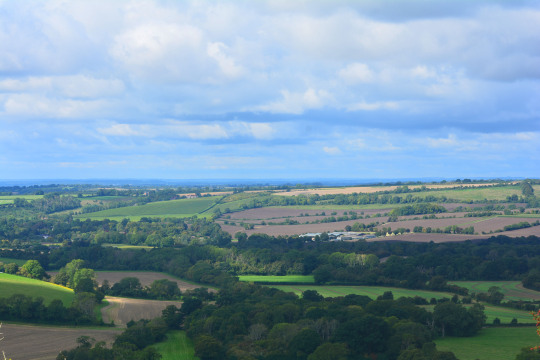
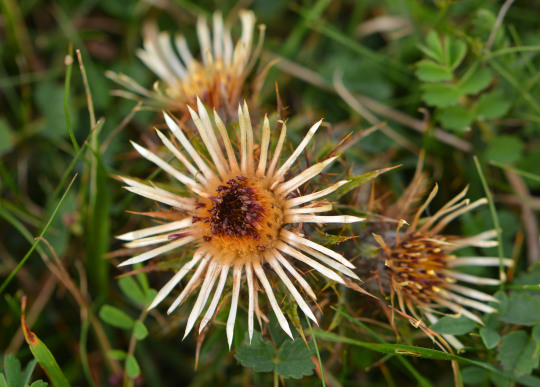


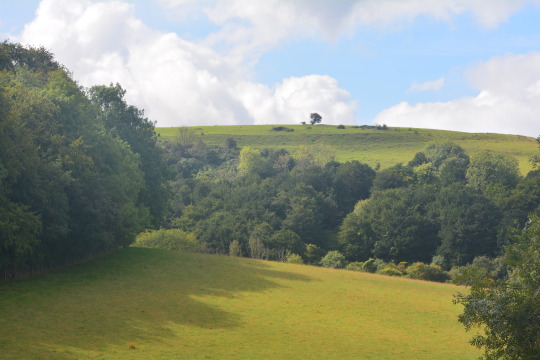
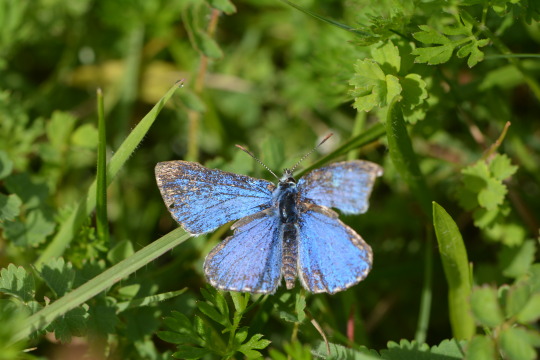
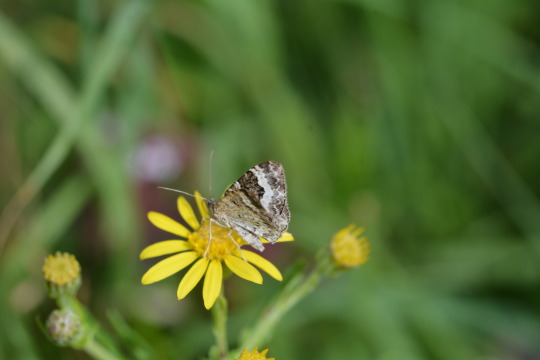
27/08/23-Old Winchester Hill
Photos taken in this set: 1. A splendid Silver-spotted Skipper, a lavish and eyecatching butterfly which it was an honour to see again this year today, I'm pretty sure this is the first time I've seen them more than once in a year which makes me feel lucky. It was a delight to see a decent few buzzing around the rich meadows here, what a year I've had for skippers. 2. Chalkhill Blue, another of my favourite butterflies that this big butterfly trip in our year coming here is always so good for which I relished getting chances to see again this year male and female. They're such prepossessing butterflies. 3, 4, 6, 7 and 8. Some stunning panoramic and extensive South Downs views, this is such a beautiful place and I am always so taken with the bright emerald landscape when we come in summer. It was so powerful to be out with great bits of sun. 5. Carline thistle, a fascinating flower to see here that I rarely or ever have before. 9. A battered Adonis Blue, it was a pleasure to get more chances to see this sensational butterfly again this year in their summer brood with a fair few flashing around the grass. A butterfly I adore which I've had a great year for. 10. A Common Carpet moth which was pretty to see, a nice one which I first ever saw at Magdalen Hill this May.
Coming here often tends to be one of the last big butterfly focused days for us of the year where we're specifically looking for butterflies primarily and we see a great variety of species, and it didn't disappoint with Meadow Browns, Gatekeeper, more lovely Small Heaths, Small Copper, excellent Small White views and of course Red Admiral seen. A late mating pair of Six-spot Burnets, Silver Y, a Yellow Shell and veneer were other nice moths seen. Grasshoppers/crickets including a fine Long-winged Conehead my first ever seen, hornet, hoverfly and I believe a Brown Hawker dragonfly were other good insects seen on a great time for them. There were some top birds seen on the walk too with a raptor quadruple of Buzzard, Red Kite, Sparrowhawk and especially epic views of a couple of Kestrels on a great day for birds of prey flying. A gorgeous Redstart was a surprise to see with Herring Gull, Woodpigeon, a group of Swallows and Robin and Chiffchaff heard also standing out. It was something of a flower fest with clustered bellflower an excellent and prominent one a first for me, only my second ever gentian I believe autumn gentian after here last year and my first devil's-bit scabious of the year a favourite of mine that I've never seen outside the New Forest before so this was different. Other highlights were marjoram, wild basil, field or small scabious, St. John's-wort, eyebright, a great clump of viper's-bugloss, agrimony, harebell, knapweed, rosebay willowherb, yellow wort and round-headed rampion. Elderberries and hawthorn were nice to see.
#silver-spotted skipper#chalkhill blue#adonis blue#adonis blues#meadow brown#gatekeeper#small heath#small copper#kestrel#buzzard#red kite#redstart#birdwatching#birds#uk#wildlife#nature#2023#earth#walking#south downs#walk#berries#six-spot burnet#common carpet moth#moths#august#clustered bellflower#carline thistle
2 notes
·
View notes
Text
birds i saw today :)
american crow
house finch
black phoebe
dark eyed junco
western bluebird
canada goose
mallard
gulls (y'all i do not even attempt gull id at this time they all look too similar to me)
whimbrel (a whole damn flock of them set down on a field and started stabbing the dirt with their beaks)
some kind of raptors at a great height, couldn't see well enough to id
many hummingbirds- again, couldn't see well enough to id but merlin thinks they included allen's, anna's, and rufous
swallows probably including barn, tree, and northern rough-winged
downy woodpecker
american robin
house wren
bushtit
yellow-rumped warbler
townsend's warbler
yellow warbler (for like 20 seconds after trying to follow its song for 20 minutes)
lesser goldfinch
bullock's oriole (they're so handsome rn)
great-tailed grackle
white-crowned sparrow
house sparrow
song sparrow
what might have been black-throated gray warbler, black-and-white warbler, white-crowned sparrow but i was confused, white-throated sparrow (which merlin identified but idk) or red-breasted nuthatch (which merlin also identified but idk)
birds merlin claims i heard today but which i did not see
red-winged blackbird (merlin said i could hear them all day but i'm not surprised i didn't see them they're elusive)
chipping sparrow
american goldfinch
birds merlin claims i heard today but idk man i kinda doubt it
american redstart
baltimore oriole (p. sure all of today's were bullock's)
lazuli bunting
black-chinned hummingbird
cirl bunting (merlin are u drunk)
5 notes
·
View notes
Photo







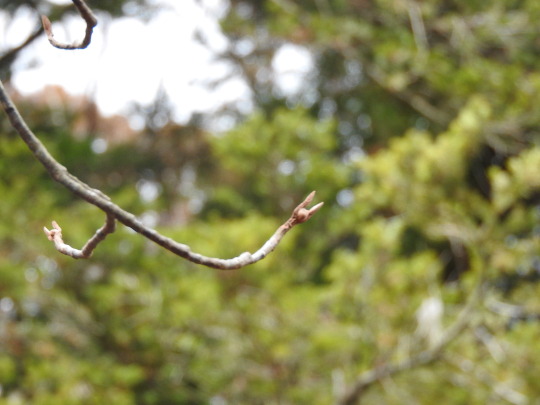


草花と小鳥を愛でる京都さんぽ⑤
NHK文化センター現地講座
京都府立植物園 2/14
雪がふったり晴れたりの日、セツブンソウに会えました。フクジュソウも!ほとんどの植物が休眠している早春に花を咲かせるSpring Ephemerals(春の儚きものたち)。そのあと、かわゆい冬芽を見ていたら、つぎつぎと顔をだしてくれた小鳥たち。アオジやシロハラ、ジョウビタキもね♡
特設会場ではチューリップなど春の花がいっぱい!ひと足早い春に出会えました。Hello, Spring!
It was the day of snowing time to time, yet Kyoto Botanical Garden welcomed us with plenty of the early spring flowers, the white beauties of Snowdrop, Wild Daffodil, and some sweet little flowers native to Japan just coming out on the ground. Thereafter, right in the middle of observing the winter buds, lucky enough, the flapping wings of Black-faced Bunting, Migratory Thrush and Daurian Redstart came to see us one after another; So friendly aren’t they? And our tour happily wrapped up in the Special Exhibition Tent in the bloom of Tulip, Canola flower and many others. Hello Spring!
●出会ったすてきな生きものたち
セツブンソウ,フクジュソウ,スノードロップ,ラッパズイセン,シロハラ,アオジ,ジョウビタキ,トチノキ(冬芽),オオカメノキ(冬芽),カナクギノキ(冬芽),早春の花展(以上写真)/ビオラ,メタセコイヤ,ウォレマイパイン(ジュラシックツリー),バクチノキ,バイカオウレン,コセリバオウレン,フキ,コブシ(冬芽),ユキツバキ,アリドオシ,マンリョウ,ノシラン,ヒイラギ,シュロ,ビワ,ニシキギ,ツグミ,キセキレイ,セグロセキレイ
3 notes
·
View notes
Text
my 100 birds journey
All species of birds I’ve seen or heard this year:
Gaaviforms:
common loon
Anatidae:
Snow goose
Canada goose
Mallard duck
American black duck
Blue-winged teal
Wood duck
Hooded merganser
Common merganser
Phasianidae:
Ruffed grouse
Spruce grouse
Phalacrocoracidae:
Double-crested cormorant
Ardeidae:
Great blue heron
Cathartidae:
Turkey vulture
Accipitridae:
Bald eagle
Cooper’s hawk
Red-tailed hawk
Northern harrier (probable)
Falconidae:
Merlin
Peregrine falcon
Charadriidae:
Kildeer (heard only)
Scolopacidae:
Spotted sandpiper
Solitary sandpiper
Laridae:
Ring-billed gull
Herring gull
Columbidae:
Rock dove (pigeon)
Mourning dove
Trochilidae:
Ruby-throated hummingbird
Alcedinidae:
Belted kingfisher
Picidae:
Yellow-bellied sapsucker
Downy woodpecker
Hairy woodpecker
Northern flicker (golden form)
Pileated woodpecker
Passeriforms:
Tyrannidae:
Eastern wood-peewee
Alder flycatcher
Least flycatcher
Eastern phoebe
Great crested flycatcher (heard only)
Vireonidae:
Red-eyed vireo
Solitary vireo
Warbling vireo
Corvidae:
Blue jay
American crow
Common raven
Hirundinidae:
Purple martin
Tree swallow
Cliff swallow
Paridae:
Black-capped chickadee (hand-fed!!)
Sittidae:
Red-breasted nuthatch
White-breasted nuthatch
Certhiidae:
Brown tree-creeper
Troglodytidae:
House wren
Winter wren
Regulidae:
Ruby-crowned kinglet
Turdidae:
Veery
Swainson’s thrush
Hermit thrush
Wood thrush
American robin
Mimidae:
Gray catbird
Northern mockingbird
Sturnidae:
European starling
Motacillidae:
American pipit (possible, heard only)
Bombycillidae:
Cedar waxwing
Parulidae:
Tenessee warbler
Nashville warbler
Northern parula
Yellow warbler
Chestnut-sided warbler
Magnolia warbler
Cape May warbler
Black-throated blue warbler
Yellow-rumped warbler
Black-throated green warbler
Blackburnian warbler
Pine warbler
Black and white warbler
American redstart
Ovenbird
Northern waterthrush
Common yellowthroat
Canada warbler
Emberizidae:
Chipping sparrow
White-throated sparrow
White-crowned sparrow
Dark-eyed junco (slate-colored)
Song sparrow
Lincoln’s sparrow (probable)
Swamp sparrow
Savannah sparrow
Cardinalidae:
Northern cardinal
Rose-breasted grosbeak
Icteridae:
Bobolink
Red-winged blackbird
Common grackle
Fringilidae:
Purple finch
House finch
American goldfinch
Passeridae:
House sparrow
3 notes
·
View notes
Text
Birds of Dorthonion
Flora, fauna, geography and environment of Arda Masterlist
Dorthonion was a region north of greater Beleriand. It was a cool region covered in steep slopes, conifer forests and Heath covered highlands. The mountain range Ered Gorgoroth bordered it on the south and above it was the fields of Ard Galen. It was inhabited by the Arafinwëan host following Aegnor and Angrod and later, the human host following Bëor. Nomadic and semi nomadic groups of the northern Sindar and Avari also possibly lived there
As always I included world building notes at the end so it’s not just a list of species
In the conifer forests: black grouse, willow tit, goldcrest, mistle thrush, pine grossbeak, common tree creeper, common redstart, black woodpecker, chiffchaff, coal tit, common raven, crested tit, wood grouse, goshawk, spruce grouse, black throated thrush, pine bunting, boreal owl
The highlands and around Tarn Aeulin: graylag goose, common nightjar, common kestrel, snow crane, hen harrier, tundra swan, horned grebe, common crane, blue duck, water rail, black francolin, northern pintail, velvet scooter, great bittern, pallid harrier, rough legged hawk, little egret, wood lark, corn crane, black necked grebe (migratory), garganey, Merlin
The cliffs and slopes: see see partridge, rock dove, great bustard, long legged buzzard, common quail, black headed bunting, booted eagle, chukard, barred warbler, northern wren, little owl, white throated dipper (near Rivil’s well), black winged kite, steppe eagle, roller
The mountain border: bearded vulture, red fronted serin, black stork, snowcock, horned lark, rock bunting, wallcreeper, blue rock thrush, red kite, peregrine falcon, golden eagle (rare), white wagtail
World building notes:
-The vague images of pine grossbeaks were embroidered on the blankets of Bëorian children using a diluted version of the dyes created from blood madder and coal. The name in Bëorian Taliska translates to pine song bird.
-The Arafinwëan host of Dorthonion as well as some of the Avarin groups hunt with birds of prey which are also used by some of the scouts. Kestrels and Harriers are the most commonly used species. The practice is less common than among the Noldor of Eastern Beleriand however.
-Feathers (usually of peregrine falcons or common kestrels) were also used as a method of communication among Arafinwëan scouts during the times of year where weather would allow for this, left in strategic locations, lodged into the earth or tucked into trees to indicate presence or dangers.
-Eggs of various ground species were eaten by the Bëorian population and there was a practice of burying the eggshells. This was learned from the elves of Ossiriand prior to their settling in Dorthonion.
-Birds eggs appear in Northern Sindar art, in or separate from nests. Though the eggs of certain species have different meanings, they are commonly associated more generally with fragility and defense. Their images may be created through pigments made from certain actual eggshells as well as minerals and plant based dyes. One common motif involves a nest of eggs upon a steep slope or cliff.
-Birds appear throughout Bëorian songs and poems. Most commonly mentioned are the general name for the “fisher birds” (wading and diving birds) seen on and around Tarn Aeulin, as well as several of the smaller songbirds found in the pine forests such as pine grosbeak, tree creepers, and thrushes. After the Bragollach the names for some species became lost or translated differently.
-Also it’s been a headcanon of mine for awhile that Baragund would take Morwen when she was a young child out to the cliffs to watch the birds. He would teach her to identify them by their call. She remembers a lot of them, even as an adult though they are called different names and their habits are often unfamiliar.
#the silmarillion#the children of húrin#Dorthonion#beleriand#musing and meta#Morwen#baragund#houseless for exiles#northern Sindar
23 notes
·
View notes
Text
Today's birding list:
Swamp sparrow
Wood duck
Orchard oriole
Greater Yellowlegs
Lesser Yellowlegs
Baltimore oriole
Hermit thrush
American Robin
Yellow warbler
Red-bellied woodpecker
Great blue heron
Great white heron
Double crested cormorant
Barn swallow
Tree swallow
Osprey
Bald Eagle
Red winged blackbird
Song sparrow
White throated sparrow
Blue-grey gnatcatcher
Canada goose
Blue jay
Carolina wren
American redstart
Common yellowthroat
Northern mockingbird
Grey catbird
House sparrow
European starling
Northern cardinal
American crow
Rusty blackbird
Mute swan
Eastern kingbird
32 notes
·
View notes
Text
Masterpost (Round 2)
(Edit: these polls have all concluded)
Bracket: Faves
Pygmy Nuthatch vs Oilbird
Bonin Petrel vs Great Bustard
White-throated Magpie Jay vs African Penguin
Dusky Seaside Sparrow vs Yellow-billed Magpie
Prothonotary Warbler vs Channel-billed Cuckoo
Pallas' Sandgrouse vs American Dipper
Blakiston's Fish Owl vs Pinyon Jay
Common Ground Dove vs Toulouse Goose
Bracket: Pretty Birds
Lady Amherst's Pheasant vs Japanese Paradise Flycatcher
Pink-necked Green Pigeon vs Plumed Whistling Duck
Pink Robin vs Red-cheeked Cordonbleu
Southern Emuwren vs Painted Redstart
Wilson's Bird-of-Paradise vs Bohemian Waxwing
Violet Turaco vs Purple Honeycreeper
Golden Pheasant vs Pompadour Cotinga
Purple-crowned Fairy vs Bluethroat
Bracket: TRUE hipsters
Emerald Starling vs Zigzag Heron
Kaua'i Mole Duck vs Whiskered Auklet
Madagascar Ibis vs Red-crested Turaco
Water Thick-Knee vs Palawan Peacock-pheasant
White-tailed Ptarmigan vs Regent Honeyeater
Invisible Rail vs Cabot's Tragopan
Collared Nightjar vs Kagu
Palau Kingfisher vs Sickle-winged Nightjar
Bracket: FOUR
Bat Hawk vs Hamerkop
Fiery-billed Aracari vs Bell Miner
Ancient Murrelet vs Arabian Babbler
Spotted Forktail vs Groove-billed Ani
Hairy Hermit Hummingbird vs Wedge-tailed Eagle
European Shag vs Short-tailed Pygmy Tyrant
Streaked Weaver vs Oriental Bay-Owl
Bearded Bellbird vs Marvelous Spatuletail
#hipster bird main bracket#bracket: pretty a#bracket: true a#bracket: four a#bracket: fave a#bracket: fave b#bracket: pretty b#bracket: true b#bracket: four b#bird polls#animal polls#information#not polls#masterpost#round 2
14 notes
·
View notes
Text
TIL about the Painted Whitestart
this is the bird that nobody can agree on the name of, and I find it hilarious
So, redstarts are this group of birds that got named a long time ago in Europe- the name means "red tail". They do this thing where they flick their tail feathers and show the color to scare bugs out of the undergrowth and eat them. Neat
Anyway, Big Biology found out about another group of birds that also did this, only their tails were white instead of red. Some people decided to call them redstarts too, but others pointed out that they weren't red, and they aren't even closely related to the redstarts. Hence, international ornithologists call them whitestarts now (even if Americans are still holding out for some reason)
Now, the Painted Whitestart is a bird with white wings and a red chest. For a while biologists were pretty sure it was a redstart, since, duh- it's red. Then, in the 60s, ornithologists looked a little closer and noticed, hey, this bird is a whitestart. (It's related to whitestarts, not redstarts). Which should have been obvious since its tail is white, not red.
Nonetheless, people are still arguing over this... search "whitestart" on the Audubon Society website and you get another bird in the whitestart genus, but the Painted Whitestart doesn't show up- it's a redstart, apparently. Meanwhile, the creators of Wingspan- the bird-focused board game that brought this to my attention- very intently labeled it as a whitestart. If people are still this hung up over a name change that happened sixty years ago... what's going to happen when all birds named for people get redesignated? (This is going to happen, and the organization doing it is the same one using the name "painted redstart"!)
Also, *very* important question: if this bird is supposedly a redstart, what's the paint?
1 note
·
View note
Text
Carnival Horizon cruise: Miami, FL; Ocho Rios, Jamaica; George Town, Cayman Islands; San Miguel de Cozumel, Mexico
October 22-28, 2023
New species observed:
Florida
White ibis
Laughing gull
Boat-tailed grackle
Jamaica
Magnificent frigatebird
Greater Antillean grackle
Little blue heron
American redstart
Royal tern
Cayman Islands
West Indian whistling-duck
White-winged dove
Northern mockingbird
Mexico
Tropical mockingbird
Cozumel emerald
Bananaquit
Tropical kingbird
Yellow-throated warbler
Black vulture
Great egret
At sea
Brown booby
0 notes
Photo

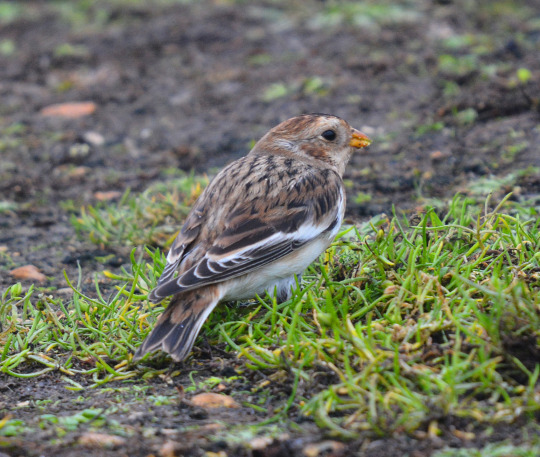

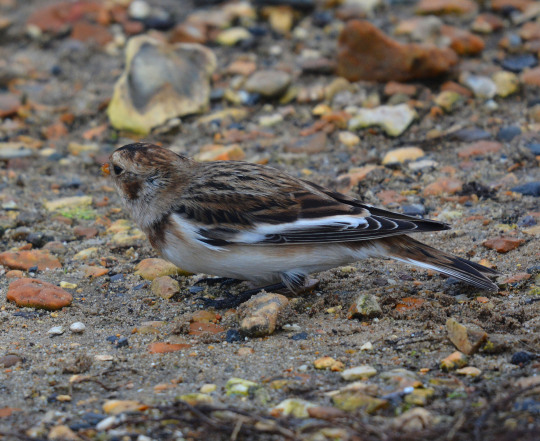



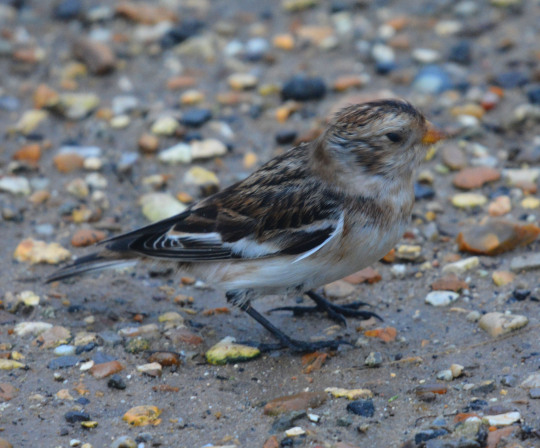

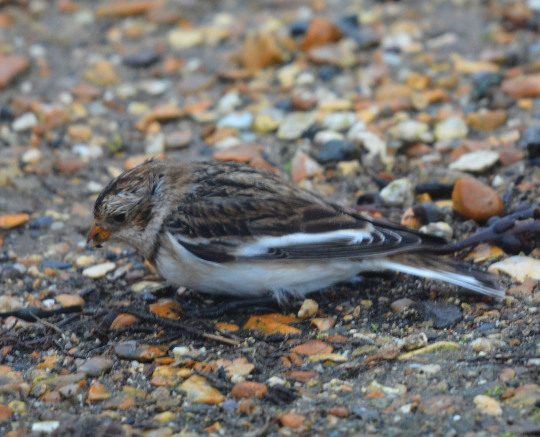
26/11/22-Snow Bunting and more at Milford-on-Sea
We came here today to look for this bird that had been around, a species I was hoping I’d get a chance to see before the end of the year and as we walked towards the cafe’ we saw it was present straight away. Then we got some stunning views of this bird that has the beauty, texture and colour of a rich wedding cake. We saw it a few times whilst here for a bit this afternoon, seeing it fly high too which we’d rarely seen in past sightings of the species. It looked like a paper aeroplane gliding through the air as it flashed the bright white of its wings. These are birds that are known to be obliging for seeing when they turn up and we’ve had some amazing views of them in my five previous sightings but these were surreal and wonderful close views and some of my best ever of this species. Like the one we saw last November at Hook-with-Warsash and other of my past sightings just arriving and seeing the bird straight away is so memorable. It was a true pleasure to see and take photos of this fantastic bird, I so love seeing these, and it brought me such joy to see this bird. Joy it was great to share with a few others, fellow bird/photography enthusiasts and passers by. I took the first four and final three pictures in this photoset of it, it was so good to see it on the varied surfaces of vegetation, muddy areas and the paving by the cafe.
This is such a fascinating and eye catching little bird. It was interesting to see it wet from the rain. It’s my most westerly ever sighting of a Snow Bunting as my five previous sightings were all at coastal spots east of home. It’s one of my best birds seen this year and is my 203rd bird of the year in a nice surge of year ticks I’ve had this month so far to take my year list into the 200s after reaching the 200 species seen this year at the end of September and making it my highest ever. It’s interesting how many of my recent year ticks have been species that were star birds of my 2019 the previous year list of mine this year beat to be my highest. It’s my fourth bunting species seen this year after Reed Bunting, Corn Bunting and Yellowhammer in another great year I’ve had seeing these wondrous and varied little birds.
Also at Milford it was lovely to see a Pied Wagtail intimately that associated with the Snow Bunting for a bit seeing them fly into each other at one point which was great, I have had a good time for seeing Pied Wagtails this month and getting chances for photos. I took the fifth and sixth pictures in this photoset of the Pied Wagtail. I also liked seeing Black-headed Gull here well with intimate views in the car park and Herring Gull over the sea as well as some Turnstones flying over the choppy sea. It did get wet whilst there so was another November Saturday seeing a rare bird in the rain after Black Redstart at Southsea Castle three weeks ago. I saw Black Redstart and Snow Bunting on the same day at Southsea Castle and the place I‘ve seen Snow Bunting most Hill Head respectively in 2017 so I always associate these with each other. It was nice to take in the views of a dramatic day here in the wet and windy weather, with Hurst Castle and the beach and spit looking nice as shown in the seventh picture I took in this photoset today. The Needles loomed nicely in the distance over on the Isle of Wight and it was interesting to see them disappear as the rain came on more. I saw a nice flower here possible a bit of thrift.
On the way here it was nice to see so much of interest from the car; some blossom on trees visible from beside the motorway near Totton which I noticed last winter another strange seasonal sight, Lower Test looking more flooded than I recall seeing before and a selection of roadside and garden flowers. This included yarrow, ragwort, hogweed and some red hot poker in someone’s garden I believe. I saw the elegant sight of a hovering Kestrel from the car which was memorable too and nice autumnal colour on the way back with lots of mistletoe seen nicely on journeys too. As we passed my old college Barton Peveril tonight on the way back I noticed the crane visible from my room and Lakeside which I saw yesterday is here for some work they’re doing as are a few other bits of tall machinery I have noticed in the view from my room the last few months. When we moved in here I had a few months of college left and I enjoyed not having too much of a walk - but an enjoyable one - to college on the days spent at this house then but it’s still fascinating to know where something visible from my room actually is. I enjoyed the spider near a crack in the hallway and the Silver-sided Sector spider the other side of the window at home tonight.
#snow bunting#photography#pied wagtail#turnstone#rain#wet#sea#seaside#bunting#buntings#herring gull#black-headed gull#wader#uk#world#nature#birdwatching#happy#2022#momentous#beautiful#choppy#autumn#autumnal#mistletoe#lower test#birding#saturday#weekend#november
2 notes
·
View notes